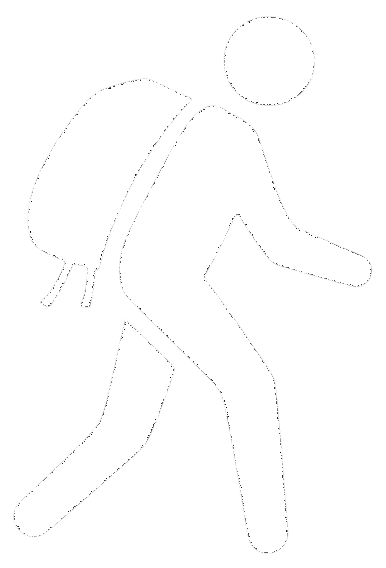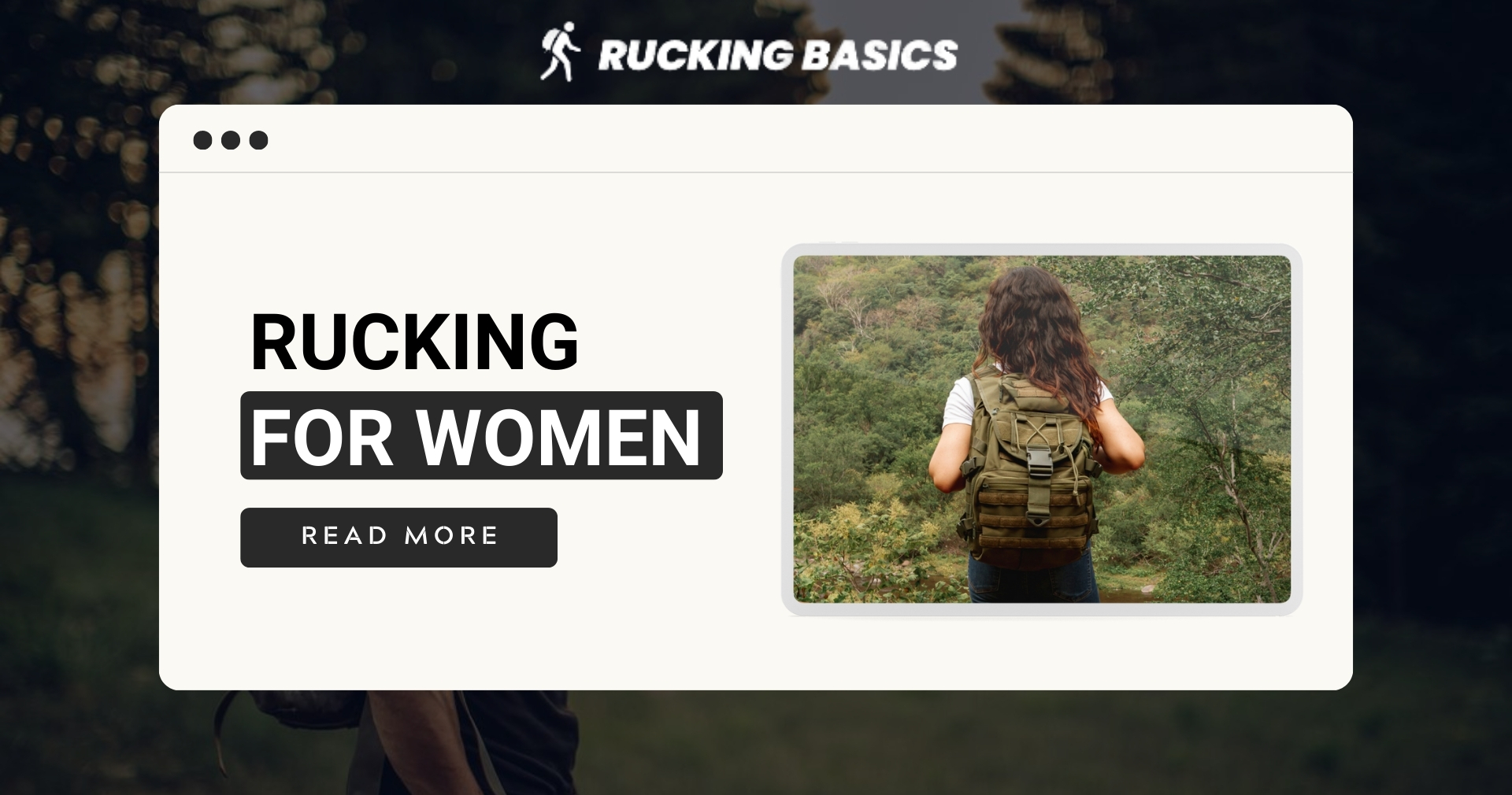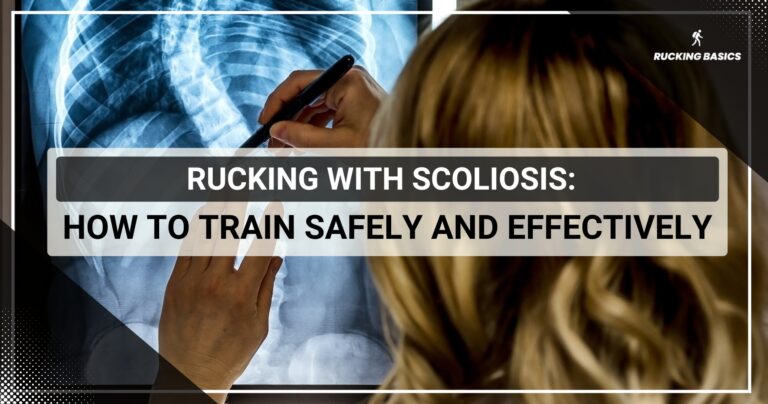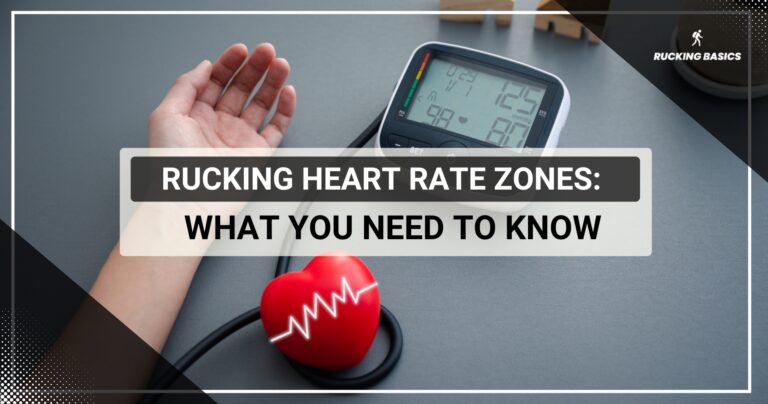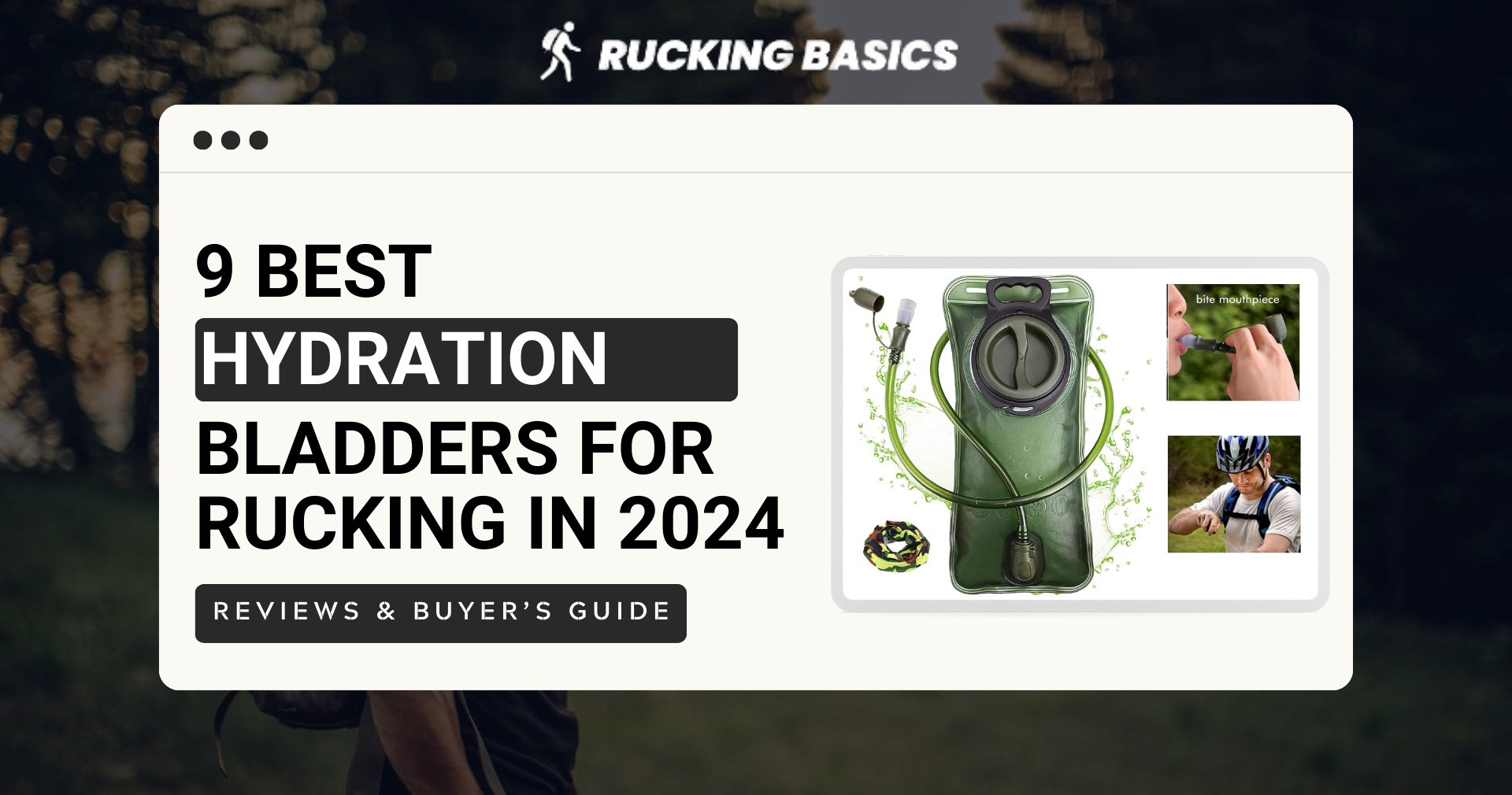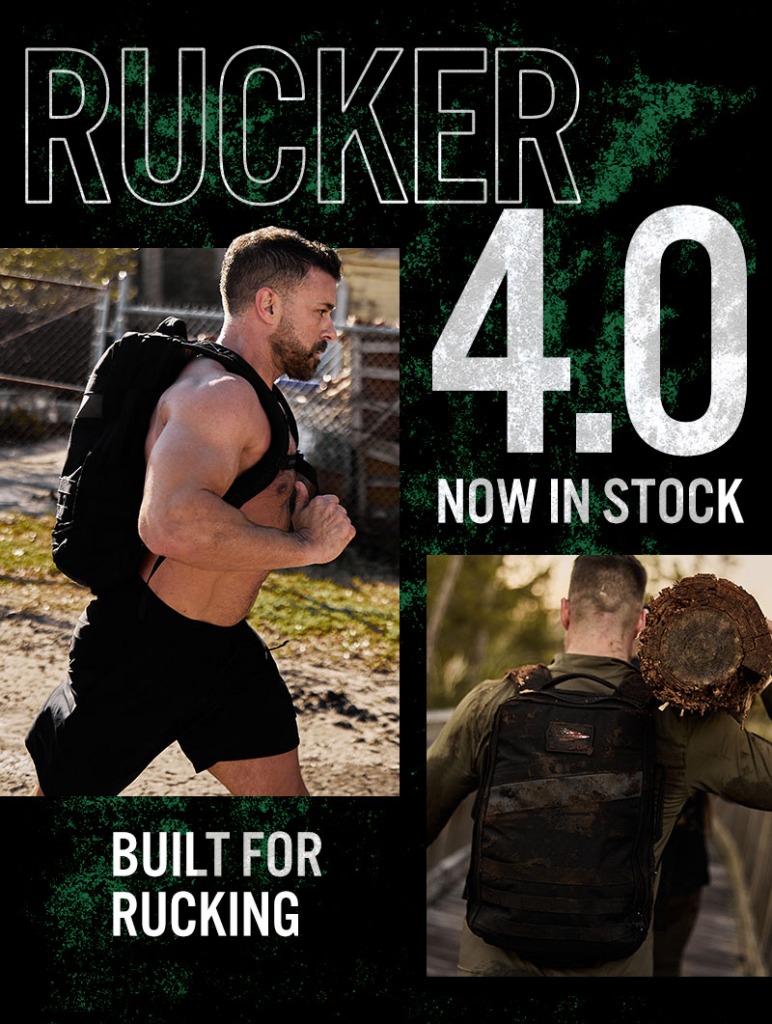The rucking community is no longer dominated by military men and fitness buffs. Women are increasingly joining rucks, and for good reason.
Rucking’s appeal lies in its simplicity and adaptability, so it can be suitable for women of all ages and fitness levels. Unlike traditional gym-based workouts, rucking can be done almost anywhere, requires minimal equipment, and can be easily integrated into a busy lifestyle.
Whether for weight loss, strength building, or mental clarity, women are discovering that rucking has far-reaching benefits on both body and mind.
A few weeks ago, I attended a rucking event, and one girl told me that she would like her personal trainer to know more about rucking for women. That’s when I decided to write this guide for all women in rucking and coaches to help them overcome some common challenges and obstacles.
Starting Your Rucking Routine as a Women
As a woman, you are probably juggling multiple roles—at work, at home, within your social circles, and everywhere in between.
That’s why, before starting, it would be best to set realistic goals that you can balance with other responsibilities. We are not pro athletes, so the spotlight won’t be on rucking. Just because someone is rucking for hours carrying 70 lbs doesn’t mean you have to do the same as a beginner or your routine will be wrong.
Think about your current fitness level and determine what you want to achieve. Are you looking to lose weight, be more active, or simply enjoy more time outdoors? Your goals should reflect your lifestyle and time availability.
For example, if you’re new to fitness, start with shorter rucks a few times a week. For busy women, good options are a 30-minute ruck during your lunch break or rucking while running errands. With a bit of creativity, building a routine that fits seamlessly into your life is possible. If mornings are your quietest time, consider an early morning rush to start your day on a strong note. If evenings are better, a sunset ruck can be a peaceful way to wind down.
Multitasking is a lifesaver for women balancing work, family, and fitness. Why not ruck with your child in a baby carrier or while walking your dog? You can even combine grocery shopping and rucking by choosing to walk with your rucksack rather than driving.
Rucking for Women’s Health
Rucking can have multiple positive effects on women’s health. Let’s see how exactly.
Caloric Burn and Weight Management
Weighted walking burns a significant amount of calories, which is key to managing weight. All those supposedly magical treatments for weight loss and extreme diets cannot be compared to sustainable calorie expenditure and healthy eating.
Walking with a weighted pack increases caloric burn, directly leading to fat loss and improved muscle tone. To achieve your fitness goals with rucking, you must focus on the intensity and duration of your workouts. You should not start with enormous weight and ruck too long but must maintain the intensity. Then, over time, increase the intensity and speed and/or weight of the rucking backpack plus hit the uneven terrain.
Strength and Endurance Building
Do you want to strengthen your legs, hips, glutes, core, and back while also enhancing cardiovascular endurance and upper body? Rucking workout is the solution and substitute for strength training. You use extra weight and not just your body weight, challenging your muscles, tendons, ligaments, and bones.
Women often experience issues like lower back pain or hip instability and are also more prone to osteoporosis. These are all reasons to include regular physical activity, particularly rucking, in your everyday life.
You will notice that you are getting stronger and that your stamina is also improving.
Rucking and Hormonal Health
Women’s hormonal balance is far more prone to problems than men’s, particularly during key life stages — puberty, pregnancy, postpartum, and menopause. Studies show that regular physical activity helps regulate hormones, reduce mood swings, and other similar problems.
For women experiencing menopause, rucking can help manage weight gain, hot flashes, and other symptoms by keeping the body active and reducing stress levels. Pregnant women and new mothers can also benefit from a modified rucking routine. This is not a moment to push too hard, but you should still think about how to maintain fitness and mental health during these transformative periods.
Mental Health Benefits for Women
The mental health benefits of rucking for women cannot be overstated. In addition to the physical advantages, rucking provides a natural way to combat stress, anxiety, and depression. The combination of physical exertion and time spent in nature promotes the release of endorphins.
Once you have more of these natural mood enhancers, you will feel better. Rucking in an urban environment is also good for mental health, but nature provides even more benefits. When you are in nature, rucking becomes a form of meditation—a time to clear the mind, reflect on personal challenges, and reconnect with oneself.
Rucking also offers a sense of accomplishment and purpose, which many people begin to miss as the years go by.
Choosing the Right Gear for Women
Women’s bodies differ from men’s, and so do their gear needs.
Backpacks Designed for Women
When it comes to rucking, not just any backpack will do—especially for women. Choosing a suitable rucksack (or weight vest) is essential for comfort, injury prevention, and overall performance.
Many manufacturers now offer backpacks specifically designed for women, featuring narrower shoulder straps, shorter torso lengths, sternum straps, and better weight distribution. You can check our guide on the best women’s rucking backpacks.
A well-fitted rucksack can make all the difference, allowing you to focus on your ruck rather than discomfort.
Footwear for Women Ruckers
Your feet are your foundation when rucking. Women’s feet tend to be narrower than men’s, requiring different support, mostly in the arch. When selecting footwear, consider your foot shape and size, the terrain you’ll be rucking on, and the distance you plan to cover. Flat feet and other conditions can also affect the choice of footwear.
Hiking boots can be fitting, but specially designed rucking shoes are even better. Barefoot rucking has become popular as well, but it’s too extreme for many.
Along with footwear, buy socks designed to prevent blisters and provide extra comfort.
Women-Specific Clothing and Accessories
Comfort and practicality are non-negotiable when it comes to rucking clothing. Start with moisture-wicking fabrics that keep sweat away from your skin and help regulate your body temperature. Layering is essential, allowing you to adjust your clothing as your body warms up or weather conditions change.
Sports bras are another must-have item. Choose one that offers adequate support without restricting your movement. Compression leggings or shorts can reduce muscle fatigue and prevent chafing. Don’t forget hats, sunglasses, and other gear.
Safety and Injury Prevention
Safety should always be a top priority. That way, you will enjoy rucking more, and the risk of injury will be lower.
Form and Posture
Good posture prevents strain on your lower back, shoulders, and knees. The weight in your rucksack should be in order; otherwise, balance will be disturbed. It’s easier to have good balance if you use ruck plates, but it is possible with other types of weights.
Use your core to prevent hunching forward, and don’t allow the weight to pull you backward.
Avoiding Overtraining
Overtraining is a common pitfall when starting any activity. You must resist the temptation to ruck too often, or injuries and setbacks will be inevitable.
Persistent fatigue, joint pain, or a plateau in your progress are the most common signs of overtraining. To avoid these issues, rest and recovery days are just as important as rucks. Rucking is a marathon, not a sprint—build a good base for long-term success.
Hydration and Nutrition
There is no good result and performance without proper hydration and nutrition, simple as that. You may be able to have good results for a short time despite a poor diet, but then it will start to catch up with you.
Before the ruck march:
- Fuel up with a meal rich in carbohydrates and protein to give your body the energy it needs.
- Carry water with you in a hydration pack or bottle.
- After your ruck, refuel with a meal that supports muscle recovery, focusing on all three macros — protein, carbs, and healthy fats.
Rucking as a Social Activity
Rucking becomes an entirely different experience when you do it as a social activity. For me, joining a rucking group was a game-changer.
The camaraderie, the shared goals, and the mutual encouragement kept me motivated, even on days when I would have skipped a solo ruck. There’s something incredibly motivating about being part of a rucking group, where we all push each other to keep going, share tips, and celebrate our progress together. Plus, the safety in numbers makes it easier to explore new routes and challenge ourselves further.
If you’re looking to mix things up, consider trying rucking at night, which adds a fun twist. Night rucking can make your usual routes feel new and exciting, giving you a fresh challenge.
Participating in rucking events and challenges has added another layer of excitement. Whether it’s a charity ruck, a virtual challenge, or a competitive event, these experiences connect you with people who share the same passion. And there you can find out how other women overcome some of the common challenges of rucking for women.
Wrapping Up
One of the main reasons many women have started rucking in recent years is that they can break free from traditional fitness norms and discover a different approach while still doing so much for overall well-being.
Rucking has also proven to be a powerful tool for women’s empowerment, since it offers something totally unique — a combination of muscular strength-building and mental toughness.
Whether you’re just starting or looking to take your rucking to the next level, now is the perfect time to take that first step. You should start by following our tips and maybe investing in a rucksack or joining a local rucking group.
We can certainly expect to see even more women-focused gear, events, and communities that suit the specific needs and interests of female ruckers.
Frequently Asked Questions (FAQ)
How does rucking compare to other forms of cardio for women?
What are the best safety practices for women rucking alone in urban areas?
When rucking alone in urban areas, prioritize safety by choosing well-lit, populated routes. Inform someone of your route and expected return time, and consider carrying a personal safety device like pepper spray or a whistle. Stay aware of your surroundings and avoid distractions like excessive phone use.
How can women adjust their rucking routine for different phases of their menstrual cycle?
Adjust your rucking routine based on how you feel during different phases of your menstrual cycle. Consider lighter weights and shorter distances during the period, especially if you experience fatigue or discomfort. In the follicular phase, you will probably have more energy for longer and more intense rucks.
What are common misconceptions about rucking for women?
A common misconception is that rucking is too intense or suited only for experienced athletes. In reality, rucking can be tailored to any fitness level by adjusting the weight and distance. Another myth is that rucking will lead to injury, but it is a safe and effective workout.
How can women address body image concerns while rucking?
Rucking can help address body image problems by focusing on strength and endurance rather than appearance. Emphasize the health and fitness benefits you’re gaining. Remember, rucking is about what your body can do, not just how it looks.
